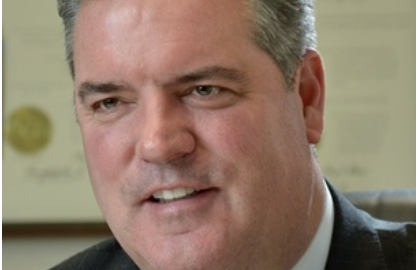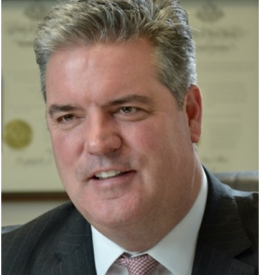
Charting the responsible path to a new energy future

The challenge ahead of us is clear: the climate is changing, and we must adapt our economy and the energy industry that powers it. Governor Cuomo has emphasized a number of initiatives designed to accelerate the transition toward a decarbonized power grid, and President Biden has made addressing climate change a priority. This is a perfect storm of opportunity to accomplish what was once thought unachievable, and we are prepared to meet the challenges head-on and help New York build back better.
Our state’s climate and energy goals are enshrined in law under the Climate Leadership and Community Protection Act (CLCPA): 70% renewable power by 2030; a zero-emitting power sector by 2040; and an economy-wide 85% reduction in greenhouse gas emissions from 1990 levels by 2050. I am an appointed member of the Climate Action Council, the group charged with much of the CLCPA’s implementation. Our efforts as a Council are not just about meeting the State’s benchmarks; this process is about working together across sectors to set us on a path for a more efficient future and leaving an environmental legacy of which we can be proud. What we accomplish here will be much bigger than New York.
In addition to working with the Council, I serve as President of the Independent Power Producers of New York, an association representing power generators of all technology types – the folks who keep the lights on. IPPNY members generate more than 60 percent of New York’s electricity and account for more than one-third of the new renewable capacity that has received awards under the State’s solicitations. We have long been actively engaged on the path to decarbonization and want to make sure that our continued efforts responsibly address reliability, economic efficiency and affordability for consumers. Toward this objective, we recently released a set of principles that will guide our work in reaching our shared climate goals:
- Reliability is Critical and Must be Maintained.
Transitioning to a more renewable energy system is an essential step, but the sun doesn’t always shine, the wind doesn’t always blow, and, so far, energy storage alone cannot meet the system’s long duration power needs when these resources are not producing energy. Foundational fuels, like natural gas, will be necessary to ensure near-term reliability, and large baseload generators will continue to provide most of New York’s electricity until new technologies mature. Maintaining and developing new quick-start and baseload resources to support intermittent renewable resources is essential for a reliable grid for some time to come.
- Leverage the Power of Markets to Achieve Decarbonization
Over the past two decades, New York put in place one of the world’s most advanced competitive wholesale electricity markets. These markets have quietly delivered dramatically lower prices, significantly reduced emissions from the State’s generation fleet, and unleashed a torrent of new technology development. And they have succeeded in achieving these accomplishments while shifting the risk of development from ratepayers to developers. Markets have been, and remain, the best, lowest cost solution for achieving our environmental goals, including decarbonization. Adding carbon pricing to New York’s wholesale electricity markets is the fastest, most efficient means of achieving our decarbonization. It just makes sense. The New York Independent System Operator has a proposal for doing this. Finalizing and adopting that proposal should be top priority early this year for New York’s elected officials, who are committed to making a difference.
- Transportation and Heating Sectors’ Emissions Must be Addressed.
New York’s electric generation sector has seen aggressive emissions reductions over the last two decades – carbon dioxide emissions are down 55% in that time and currently make up only about 17% of the state’s emissions. Meanwhile, the transportation and building stock together make up more than 60% of the statewide total. As part of an economy-wide approach, a more rapid transition must be achieved through electrification of the transportation and building sectors. These areas of the economy have lagged and offer the greatest opportunity for progress.
- Promote Needed Transmission Development
Approximately 80% of our state’s transmission lines entered service before 1980. Cold War-era transmission simply will not cut it anymore. Market signals that include the cost to society of carbon will create incentives for transmission investment to link downstate low carbon electricity demand with upstate supply. Governor Cuomo’s announcement of a competitive solicitation for transmission projects to allow the benefits of New York’s existing and new renewable energy opportunities to be felt across the state is welcome news and a great step to further support our economy and create jobs.
- Fuel and Technology Diversity is Essential.
A diverse electric system is essential to cost-effectively maintain and strengthen reliability. Diversity provides grid stability as the State pursues an emissions-free electric system and will become more important as the electrification of other sectors puts more reliance on the grid. A mix of resources that are weather-dependent (like solar and wind) along with those that are “dispatchable” (meaning they can be turned on or off with relative ease), like efficient natural gas plants, are needed for the foreseeable future until we can advance and deploy more technologies to balance the variable nature of renewable resources.
- Economic Impacts Must be Examined.
The economic impacts from the coronavirus pandemic are being felt at every level. As we mobilize to address our environmental and climate challenges, we must keep this in mind. Technical feasibility and consumer cost benefits should be evaluated to allow informed decisions on how to reach our decarbonized future in the most efficient and cost-effective manner and in a way that doesn’t unduly burden those least able to handle it.
Make no mistake, the challenges ahead are daunting, and there are no easy answers. But challenges provide opportunities, and, by using the fight against climate change and our highly successful wholesale energy markets as an economic engine, New York has a great opportunity ahead. With the efforts under the CLCPA, and the above touchstones in mind, we can set ourselves on the path to success to a reliable, clean, and affordable energy future.
Gavin Donohue is the President and CEO of the Independent Power Producers of New York (IPPNY), and a member of the New York State Climate Action Council. Mr. Donohue has a wealth of experience in energy and environmental policy issues, and he previously served as Executive Deputy Commissioner for the New York State Department of Environmental Conservation. For more information, visit www.ippny.org.
